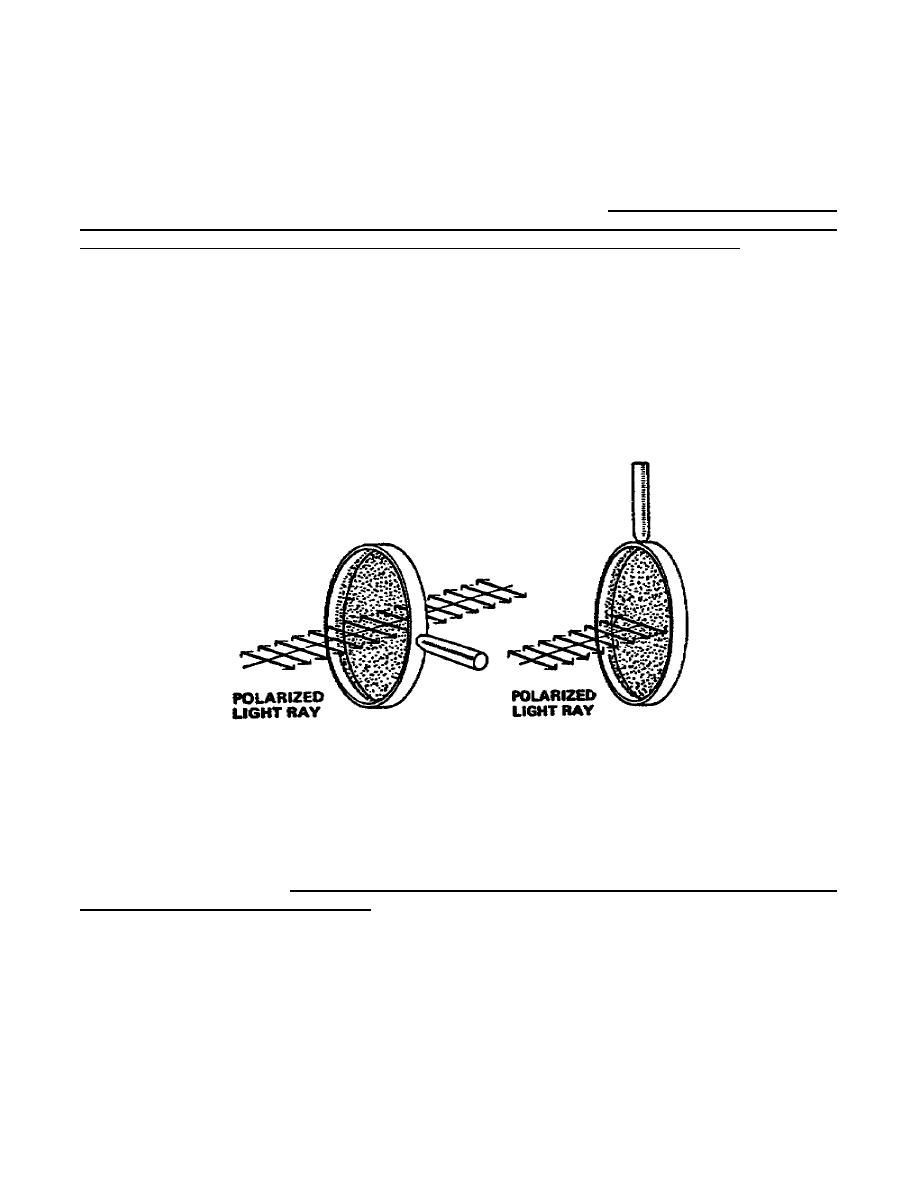
b. A polarizing screen will pass the vibration of a light ray in only
one plane. Some polarizing screens have handles, and these screens pass the
light vibration in a plane which is parallel to the handle.
When the
polarizing screen is passing the light vibrations of polarized light, you'll
see no effect on reflections or the sky. Rotate the polarizing screen 90
degrees. In this position the screen will not transmit the polarized light,
so it removes reflections and darkens the blue sky. Polarizing screens will
work only with polarized light because polarized light vibrates in one
direction and the polarizing screen can eliminate that vibration.
If you
look through a polarizing screen and rotate it until you see its maximum
darkening effect, you'll see some light still reflecting from the scene.
This light is the nonpolarized light in the scene and the polarized light
vibrating in the plane that the screen will transmit. You'll use this light
to take the picture.
If you want to get the maximum effect with a
polarizing screen, the angle at which you view the reflecting light must
equal that of the sun (or the original light source) to the reflecting
surface. For example, if the sun is shining on water at a 60-degree angle,
you'll get the maximum effect with a polarizing screen when you take the
picture at a 60-degree angle to the water's surface (fig 2-9).
Figure 2-9.
Polarized light
In the drawing on the left, the polarizing screen is transmitting the light
vibration of polarized light. In the drawing on the right, the polarizing
screen has been rotated 90 degrees.
In this position, the screen absorbs
the polarized light so that it removes reflections and darkens the blue sky.
c. A polarizing screen has a filter factor of 2.5 (increase exposure by
about 11/3 stops).
This filter factor applies regardless of how much you
rotate the polarizing screen.
If you are using a through-the-lens light
meter built into your camera, rotate the polarizing screen until it shows
its minimum effect, set the camera controls and leave them there.
Then
rotate the screen until you obtain the desired effect and make the exposure.
You have removed light you didn't want in the first place and your picture
will be correctly exposed.
If you are making exposures based on the
daylight exposure table in Lesson 1, then for the maximum effect, the scene
will be
43


 Previous Page
Previous Page
